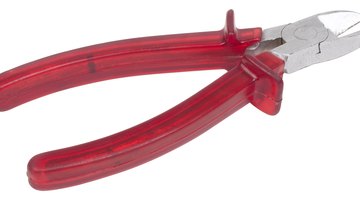How to Wire a Contactor With a 120 Volt Coil
Wiring a contactor is a safe method for controlling electrical power. Typically a contactor is activated by a remote switch or other controlling electrical device. The main advantage in using a contactor is that the switch can be powered by a different and lower power source from the main contactor power supply.

In other words, a 120 volt alternating current (commonly referred to as a 120 VAC) is wired to the coil of the contactor. The contactor then uses the set of conductive discs, the contacts, to supply a 240 VAC power source to something like an air conditioner unit or an air compressor.
Things You Will Need
- Wire strippers
- 120 VAC rated switch
- 120 VAC power supply
- 120-volt coil controlled contactor
- Screwdriver
Tip
Follow all local electrical regulations whenever servicing or installing any type of electrical devices.
Warning
Never work on any electrical device while it is energized. Serious burns or injuries will occur.
-
Remove all electrical power from the circuits that are supplying electricity to the 120 VAC switch and coil, as well as any electrical power for the set of controlling contacts.
-
Use the wire strippers and remove 1/2 inch of the outer insulation from all wires that will be connected to the coil and the contactor’s screw terminals. You will want to reveal the bare copper underneath the outer insulation.
-
Connect the wires from the 120 VAC power supply to the switch in the following manner. Note there should be two screw terminals on the 120 VAC switch. Attach the wire coming from the 120 VAC electrical supply to the top screw terminal on the switch. Secure another wire to the second screw terminal on the switch. Attach the other end of that wire, to one of the screw terminals on the 120 VAC coil located on the contactor.
-
Attach the 120 VAC electrical circuit’s neutral wire to the other screw terminal on the 120 VAC contactor coil. Energize the 120 VAC circuit. Operate the control switch to the “on” position. The set of contacts should now be connected. You can hear the contacts going “on” and “off” while turning the switch in the appropriate direction.
-
Remove the 120 VAC control power.
-
Observe the main set(s) of contacts located on the contactor. There may be as many as three separate pairs of switching contacts on the device. Each set, or pair, is like a single switch. Generally the pair inline with each other are the mating connective set of contacts. The top set of contacts will be labeled in one of two ways, either as “L” or “line.” The lower set of contacts will be identified as either “load” or “T.” Each mating set of contacts is also numerically identified. In other words, L1 will be electrically connected to T1 when the control coil is energized. The same holds true for L2 to T2 and L3 to T3.
-
Connect the incoming supply power for the electrical device being controlled to the terminals labeled as “line” or “L.” Attach the wires going to the device to the contact terminals labeled as “T” or “load.” Various electrical devices will have different wires connected to them for the power. Consult the manufacturers specifications for that device as to the exact wiring placement and sequence.
The Drip Cap
- Wiring a contactor is a safe method for controlling electrical power.
- The main advantage in using a contactor is that the switch can be powered by a different and lower power source from the main contactor power supply.
- The contactor then uses the set of conductive discs, the contacts, to supply a 240 VAC power source to something like an air conditioner unit or an air compressor.
- Attach the wire coming from the 120 VAC electrical supply to the top screw terminal on the switch.
- Generally the pair inline with each other are the mating connective set of contacts.
- The top set of contacts will be labeled in one of two ways, either as “L” or “line.” The same holds true for L2 to T2 and L3 to T3.
References
Photo Credits
- Hemera Technologies/PhotoObjects.net/Getty Images
- Hemera Technologies/PhotoObjects.net/Getty Images
More Articles



